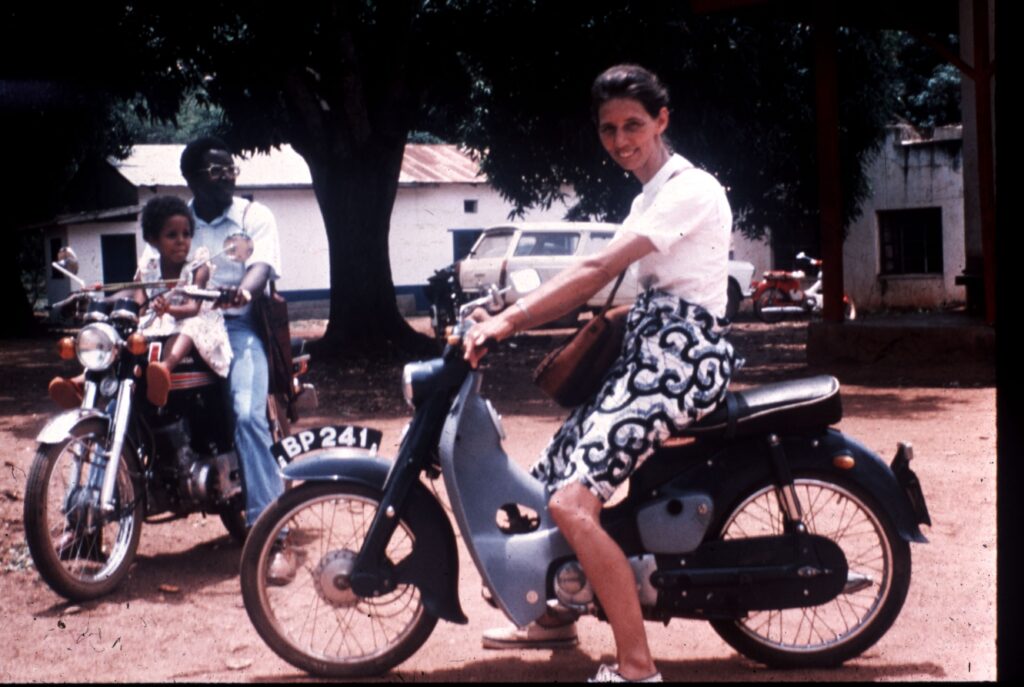A civic tech creative on modernizing government sites, MySpace coding and pre-internet memories

Here at Mozilla, we are the first to admit the internet isn't perfect, but we know the internet is pretty darn magical. The internet opens up doors and opportunities, allows for human connection, and lets everyone find where they belong - their corners of the internet. We all have an internet story worth sharing. In My Corner Of The Internet, we talk with people about the online spaces they can't get enough of, the sites and forums that shaped them, and what reclaiming the internet really looks like.
This month, we caught up with Senongo Akpem, a creative in civic tech. He's currently VP of design at Nava, a public benefit corporation that takes a human-centered approach to modernizing government technology and making it more accessible. We talked to him about his MySpace coding days, his fascination with the Internet Archive and why he thinks smart design might just be the bridge we need between government and the people it serves.
What is your favorite corner of the internet?The Internet Archive. It's stunning how much of the Western world's knowledge is captured there, metadata and all. You can spend hours examining typography choices in old travel magazines, or old-school VHS-quality shows from Japan, or an intro to modern architecture that was written in 1962.
What is an internet deep dive that you can't wait to jump back into?There are a growing number of sites like The People Say that act as research indexes and databases to capture the voices of the public. One of Nava's core strengths is our research practice, which includes human-centered design. We strive to speak to the same priority populations when we conduct research with our government partners in the benefits delivery and health care spaces.
I'm eager to get back into the data and read more of the stories in there.
What is the one tab you always regret closing?Semafor Africa has a great newsletter that explores in detail the political, social and cultural news across the continent. In one post, you might read about clean energy projects and the cost of their capital investments. In another, you might read about the backstory of an Africa Cup of Nations (AFCON) match delay.
There are so many complex, 21st century stories to be told about the African continent.
What can you not stop talking about on the internet right now?For the past year, I've been part of a Nava team working on an effort to modernize Grants.gov. Grants.gov is the front door for grants across the federal government, and disburses more than $300 billion (yes, that's a B!!) in grants throughout the country every year. These grants go to a range of grantees from small, community-based organizations to large, national nonprofits. Nava also supports the Office of Grants to help ensure the federal government doesn't underserve any communities.
I've mainly been leading strategic branding and communications efforts on the project, which often means nerding out with our government partners and coworkers on things like accessible color palettes, type scales and image banks. It's a facet of civic tech that people often don't think about.
In 2023, the Office of Management and Budget released guidance directing agencies to deliver a digital-first public experience." Their guidance gives agencies details and deadlines for the implementation of the 21st Century IDEA Act, which was signed into law four years ago.
In multiple places, the memo describes how brand identity, visual design and design systems play a role in building trust in government systems - specifically, that clear and consistent use of an agency's brand identity and visual design help the public identify official government entities.
How do you see your work with Nava helping improve public trust in digital services?Nava is a public benefit corporation (PBC), which is pretty unique in our space, and was intentionally set up that way by our founders. Being a PBC is not just a best practice or a label - it has legal weight, and is part of the company DNA. The people I work with at Nava have a fiduciary duty not only to our stakeholders, but to our stated mission: to improve the access, effectiveness, and simplicity of government services.
Nava believes that for companies like ours - that are paid with taxpayer dollars, whose work affects millions of lives - social responsibility should be the norm, not the exception.
The human-centered approach we take creates a better experience for end-users and the agencies we partner with. It ultimately builds trust in public institutions and the digital services provided. I see huge opportunities for the researchers, service designers, content strategists, frontend designers and communications designers at Nava to contribute to this.
As Nava grows - we've recently entered the mid-sized category - we continue to place our mission at the forefront, and strive to set a good example of what's possible.
What was the first online community you engaged with?My first sustained experience with an online community (not counting email) was probably MySpace around 2005-06. As I'm sure many people remember, it was a hit as soon as people got on there and started adding content. I was living in Japan at the time, and used the CSS/HTML hack to put a skin on my page while adding music, friends, you name it. I think that was one of the first times I felt the internet converging across cultures, rather than just the Web 1.0 model of static blocks of information.
What articles and/or videos are you waiting to read/watch right now?I got about two-thirds of the way through Scavengers Reign before I had to take a pause. It's about the survivors of a spaceship crash on a distant planet that is teeming with strange life. When I started it, I assumed it would be a beautiful, quiet anime like a Moebius illustration. Spoiler Alert: It turned into a horror show! Every episode was more desperate than the last one. I'm waiting to build up the nerve to finish the first season.
If you could create your own corner of the internet, what would it look like?It would probably be something dedicated to archiving cultural/family ephemera. For the past few years, I have been slowly scanning in my parents photos, letters, postcards, passports and other small pieces of their life that I have managed to save.
 Senongo's mother, father, and older sister sit on motorbikes in Benue State, Nigeria, around 1975-76.
Senongo's mother, father, and older sister sit on motorbikes in Benue State, Nigeria, around 1975-76.A few years back, while in a taxi in Denver, I told the driver about my project and we began to chat about how important it is to save those family memories. The driver explained that she was from New Orleans, and her grandmother had been a Voodoo priestess. The family had sadly not been able to capture any of her stories or memories before she passed.
My own corner of the internet would be a set of these poignant little memories from before the internet, scanned or recorded for future generations to share.
Senongo Akpem is the vice president of design at Nava, a public benefit corporation working to make government services simple, effective and accessible to all. For the past two decades, he has specialized in collaborating with clients across the world on flexible, impactful digital experiences. Prior to joining Nava, he was design director at Constructive, a social impact design agency, and an art director at Cambridge University Press, where he led a global design team. Senongo is the author of Cross-Cutural Design," a book about creating culturally relevant and responsible experiences that reach a truly global audience.
The child of a Nigerian father and a Dutch-American mother, Senongo grew up in Nigeria, lived in Japan for almost a decade, and now calls New York City home. Living in constantly shifting cultural and physical spaces has given him unique insight into the influence of culture on communication and creativity. Senongo speaks at conferences around the world about cross-cultural design, digital storytelling, and transmedia. He loves any and all science fiction.
The post A civic tech creative on modernizing government sites, MySpace coding and pre-internet memories appeared first on The Mozilla Blog.